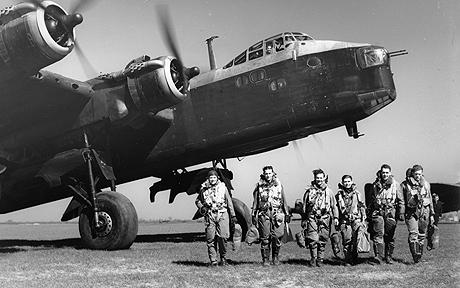The 487 Sqdn left from Feltwell at 1943-01-22 at 12:15
He flew with a Ventura B-34/B-37/PV-1/PV-2 (type II, serial AE899, code EG-O).
Campaign report of the USAAF:
21 January 1943 (Eighth Air Force): At the Casablanca Conference between Prime Minister Churchill, President Roosevelt and the Combined Chiefs of Staff (CCS), the CCS issue the "Casablanca Directive." It broadly outlines the operations of the USAAF VIII Bomber Command and the RAF Bomber Command located in the UK as having the primary object of the destruction of the German military, economic and industrial systems and undermining of morale of the German people. Primary targets listed in order of priority are submarine construction yards, the aircraft industry, transportation, oil plants and other war industries. It largely relieves the VIII Bomber Command of supporting North African operations. Lieutenant General Ira C. Eaker, Commanding General Eighth Air Force, completes a paper called "The Case For Day Bombing" which he presents to General Henry "Hap" Arnold, Commanding General Army Air Forces at the Casablanca Conference. Eaker then discusses these ideas on the merits of daylight bombing with Churchill in an attempt to convince him of its effectiveness. Churchill later concurs. This paper leads to development of the Combined Bomber Offensive (CBO) program. Spitfire Mk Vs of the 4th Fighter Group fly 49 sorties during the day. Early in the day, 26 escort RAF Venturas attacking Caen/Carpiquet, France. Later in the day, 23 support a Circus (heavy fighter escort of a small force of bombers in an attempt to provoke a Luftwaffe fighter response) to Caen, France. A 93d Bombardment Group (Heavy) B-24 attempts a Moling mission, i.e., bad weather operation by single aircraft designed to alert the Luftwaffe.
22 January 1943 (Eighth Air Force): Twenty five Spitfire Mk Vs of the 4th Fighter Group support RAF Bostons on missions. We claim four enemy aircraft destroyed; one Spitfire is lost, one damaged beyond repair, one damaged and one pilot is MIA.
Campaign report of the RAF:
21/22 January 1943
79 Lancasters and 3 Mosquitos dispatched to Essen encountered total cloud and bombs were dropped blindly on estimated positions. 4 Lancasters lost.
70 aircraft on a large minelaying operation in the Frisian Islands; 4 Wellingtons and 2 Halifaxes lost.
22 January 1943
23 Bostons and 18 Venturas attacked airfields in France while 12 Mitchells of Nos 98 and 180 Squadrons carried out the first raid by this new type of aircraft on oil targets at Terneuzen near Ghent. 2 Venturas and 3 Mitchells were lost, including the aircraft of Wing Commander CC Hodder, commanding officer of No 180 Squadron.
22/23 January 1943
2 Mosquitos attacked Cologne without loss. This was the first Oboe attack on Cologne and the damage reported (55 houses damaged, 5 people killed and 22 injured) show that a few aircraft using modern aids could sometimes cause as much damage as the forces of up to 100 bombers which had often been sent to Cologne in marginal weather conditions in 1941 and 1942.
With thanks to the RAF and USAAF.net!
This record can also be found on the maps of Back to Normandy with Google coordinates. You can find the maps by clicking on this link on this location.
There are several possibilities to investigate the flight records on Back to Normandy. All the flights are plotted on maps, sorted "day by day", "by squadron", "by type aircraft", "by year or month", "by location" and much more! Don't miss this!!!
If you have any information that you want to share, please add your comment at the bottom of this record. Or send your information to [email protected]. This information will be added to the record.
Your photos and your information are very welcome! The young do care and with your help we keep up the good work.



